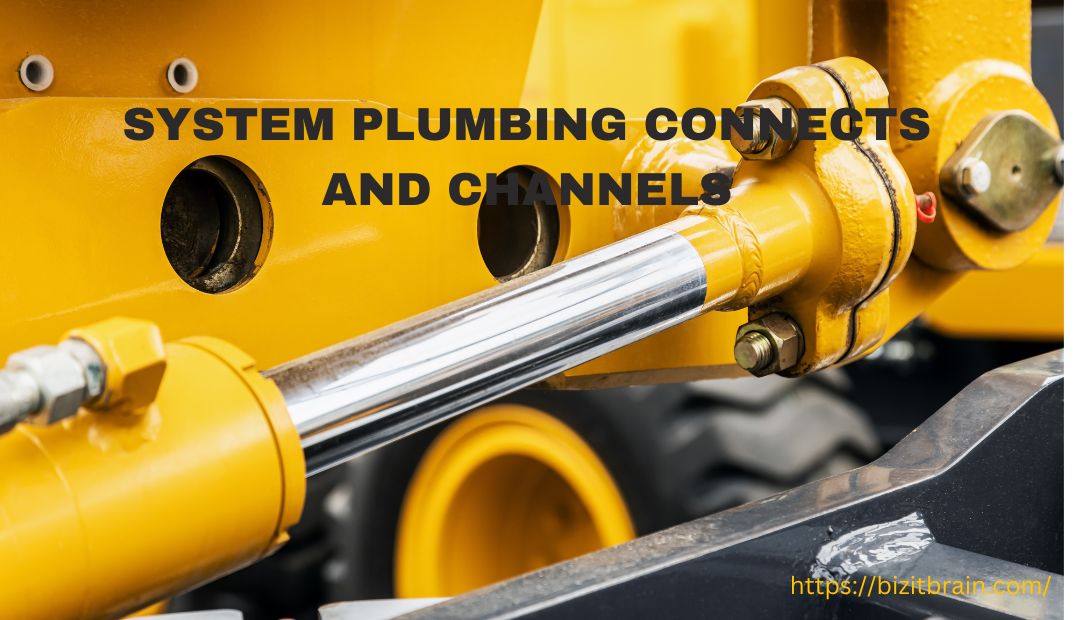
Hydraulics power some of our most advanced machines. They operate according to Pascal’s law, which states that any pressure exerted anywhere on an enclosed liquid will be transferred evenly throughout its container.
Hydraulic systems use pressurized fluids to generate force and movement that power everything from log splitters to industrial machinery. Take this online course to gain more knowledge about their operation!
What is a Hydraulic System?
Hydraulic systems are versatile drive systems that utilize pressurized fluids to initiate movements in equipment. Commonly found across industries and mobile environments, hydraulics offer exceptional power, efficiency and precision – featuring reservoirs, pumps, heat exchangers, control valves, actuators and actuators as key component superheroes.

System Plumbing Connects and Channels
Hydraulic system plumbing connects and channels hydraulic fluid between components to allow them to work seamlessly without losing or leaking pressure, whether this involves rigid tubing or flexible hoses that snake around machinery, or whether built into machines themselves.
Diggers, Cranes and Bulldozers
Hydraulic systems enable construction machines like diggers, cranes and bulldozers to move by converting mechanical energy into hydraulic power. Hydraulics also power brakes, steering and other functions on vehicles and airplanes.
What is a Hydraulic Pump?
Hydraulic pumps convert mechanical energy to fluid pressure, an essential function that allows hydraulic systems to function smoothly.
Construction Equipment
These pumps are commonly found in construction equipment like excavators, loaders, bulldozers and cranes; in the automotive industry they provide power for vehicle braking and steering systems.
Hydraulic pumps use gears to manipulate fluid chambers, creating variations and driving flow. At their core, even basic models use two meshed gears for this purpose.
Performance and Efficiency
Hydraulic pump groups must be designed carefully for maximum performance and efficiency, but any inefficiency must be immediately reported for professional advice. A malfunctioning hydraulic pump may produce noise such as growling, grating or screeching that indicates wear-and-tear wear in its inner components that must be addressed immediately.
What is a Hydraulic Cylinder?
Hydraulic cylinders are mechanical actuators which use hydraulic fluid pressure to produce linear motion through pushing or pulling action, making them essential components in any hydraulic system. Common uses for them include mining, construction, aviation and transport applications.
It is crucial when choosing a hydraulic cylinder to find one suitable for your application, making sure to select one capable of supporting the necessary load without buckling under strain. Furthermore, its size must correspond with piston diameter and rod diameter according to P=F/A calculations.
Common hydraulic cylinder designs include ram styles, tie-rod cylinders and welded cylinders. It is vitally important that their surfaces are protected from corrosion and wear which could compromise seals in your hydraulic system and scrape away at your seals compromising your hydraulic system’s operation.
What is a Hydraulic Reservoir?
Hydraulic reservoirs contain the hydraulic fluid required to power hydraulic systems and their metal walls help regulate it by absorbing and dissipating heat. A rectangular-shaped reservoir offers more surface area to dissipate heat.
Engine Bleed Air
Pressurizing a reservoir with engine bleed air or hydraulic pressure produced within its system to maintain an appropriate pressure is often done to meet specific specifications, exerting large loads on it that must be taken into consideration to maintain structural integrity and ensure longevity of use. Such pressure loads must not impose unnecessary stresses and strains that could compromise its structural integrity and lead to its premature failure.

Enable Easier Servicing
Most hydraulic reservoirs feature a capped opening for filling, with clear or readable sight gauges to display fluid levels, and drain plugs. Some also come equipped with return lines passing through internal filters for enhanced contamination control, while externally-mounted filters enable easier servicing.
What is a Hydraulic Filter?
Hydraulic filters play an essential role in maintaining the integrity and functionality of hydraulic systems. By filtering foreign particles from oil, hydraulic filters protect components from damage while decreasing wear-and-tear and increasing lifespan of systems.
shredded elastomeric seals
Particles such as rust, dirt, sludge, metal shavings and shredded elastomeric seals may enter your hydraulic system without proper precautions being taken to avoid their entry and cause clogs or blockages which drastically decrease performance and efficiency.
Hydraulic filters remove contaminants from hydraulic fluid before returning it back to the reservoir, providing clean hydraulic oil for future cycles. They may be placed directly inside or just before it on the return line; inline or spin-on filters may also be available.